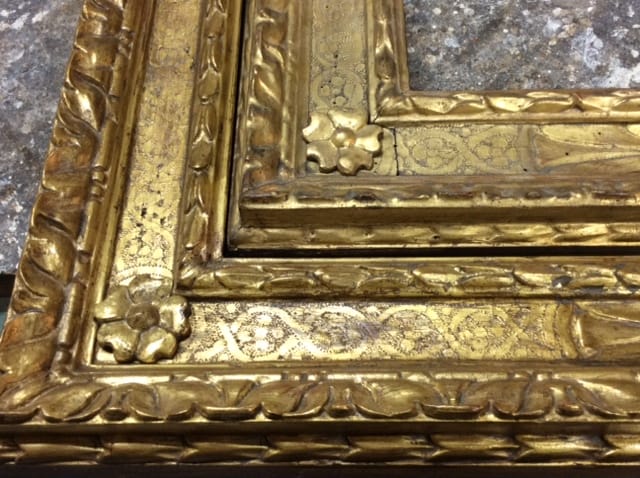Explore the charm of an ANTIQUE WOOD FRAME and discover how it enriches your décor with enduring style and historic appeal.
Have you ever gazed at a stunning painting only to find its modern, mass-produced border breaking the spell? Many of us long for a frame that elevates art rather than distracts from it. An ANTIQUE WOOD FRAME can do just that, combining historic craftsmanship with a deep sense of tradition. In this article, we’ll delve into what makes antique wooden frames so captivating, how to recognize quality pieces, and the best ways to incorporate them into your home. Get ready to learn about material selection, ornamental details, restoration insights, and more—so you can bring a little piece of history into your space.
For a truly remarkable antique wood frame experience, follow these essential steps:
- Why Antique Wood Frames Hold Unique Value
- Recognizing Key Characteristics
- Exploring Popular Wood Types
- Understanding Ornamental Carvings and Details
- Evaluating Condition and Authenticity
- Tips for Restoration and Care
- Styling Your Décor Around Antique Frames
- Where to Find Quality Antique Wood Frames
- Working with Specialists for Customization
These sections will guide you from assessing quality and condition to displaying your antique wood frame in a way that honors its legacy.
Continue reading to discover how antique wooden frames can transform your favorite artwork or mirror into a captivating focal point—and how you can preserve their charm for generations to come.
1. Why Antique Wood Frames Hold Unique Value
Antique wood frames offer much more than a way to showcase art or mirrors; they carry a piece of history within every curve and carving. Handcrafted by skilled artisans, these frames often exhibit distinct styles from particular eras—Renaissance, Baroque, Rococo, or even early 20th century. As a result, owning such a frame connects you directly to the techniques and aesthetic preferences that defined those times.
Part of their allure lies in the natural aging of the wood. Over decades or centuries, wood develops rich color variations and subtle textures that simply can’t be replicated by modern manufacturing. This patina tells a story: each grain and knot is a testament to the wood’s journey, while minor imperfections hint at the frame’s life before reaching you. When you add an antique frame to your décor, you’re incorporating an authentic piece of history that adds depth to any setting.
Beyond aesthetics, antique wood frames can hold or even increase their value over time. Serious collectors and interior designers often prize them for their craftsmanship and uniqueness. Because no two frames age identically, each piece is essentially one-of-a-kind. Whether you’re displaying an old family portrait or a contemporary piece of art, a carefully chosen antique wooden frame becomes a conversation starter. Every glance at it offers an opportunity to appreciate artistry that has transcended centuries, reminding us that beauty and craftsmanship can stand the test of time.
2. Recognizing Key Characteristics
Identifying a genuine antique wood frame isn’t always straightforward, but certain features can help you distinguish it from modern reproductions. One of the first indicators is construction style. Antique frames were often made using joinery methods such as mortise-and-tenon or corner-block reinforcements, rather than nails and industrial adhesives. If you see dowels, wooden pegs, or hand-forged nails, there’s a good chance the piece has considerable age.
Look closely at the wood itself. True antique frames may display subtle warping or slight irregularities in thickness—signs they were carved or planed by hand. The finishing methods also differ: earlier frames might have layers of old varnish or shellac that exhibit cracking or a warm amber tone, as opposed to the uniform sheen of modern chemical finishes. Additionally, period frames often reflect the style of their era, featuring ornate carvings or distinct motifs like acanthus leaves, ribbons, or other decorative flourishes.
Examining the back of the frame can be just as revealing as the front. Genuine antique wood typically darkens over long periods and may show evidence of past repairs or patches. It’s also common to find gallery labels, handwritten inscriptions, or even stamps indicating exhibitions or ownership history. These signs add to the frame’s provenance and appeal. By paying attention to these details, you can spot a frame’s authenticity, which in turn influences its value and significance. Ultimately, learning to recognize the real deal ensures you invest in a piece with genuine heritage.
3. Exploring Popular Wood Types
Though antique wood frames come in countless varieties, certain wood types were favored in different regions and periods. Oak, for instance, was a go-to material for European frames in the Middle Ages and Renaissance due to its durability and robust texture. Its strong grain patterns also lend an air of solidity to the overall design. Walnut, meanwhile, gained popularity in the Baroque era for its rich color and the smooth, inviting surface it offers when carved.
In many Italian and French frames, you might find poplar or limewood, which were easier to work with for intricate gilding and hand-carved details. These woods often received multiple layers of gesso to prepare the surface for gold leaf or polychrome finishes. Mahogany and rosewood frames became more common in the 18th and 19th centuries, prized for their deep hues and elegant grain patterns that complemented the refined tastes of the time.
Your choice of wood can significantly affect the frame’s character and how it melds with your interior décor. Darker woods exude warmth and gravitas, perfect for classic or formal settings. Lighter woods, on the other hand, can brighten a room and work well if you’re aiming for a subtle yet distinctive statement piece. Whichever type you prefer, understanding these classic wood selections and their historical contexts can help you make a more informed decision when searching for that perfect antique frame.
4. Understanding Ornamental Carvings and Details
One of the most enchanting aspects of an antique wood frame lies in its ornamentation. From delicate floral motifs to bold, sweeping scrolls, these decorative features often hint at the period and region where the frame was crafted. Take Baroque frames as an example, known for their dramatic flair, swirling shapes, and sometimes gilded highlights. Rococo frames, meanwhile, might feature playful asymmetry, shells, and pastel tones to reflect the artistic tastes of 18th-century France.
Renaissance frames can showcase more structured carvings, like geometric patterns or classic moldings, befitting the era’s focus on harmony and proportion. In certain Victorian frames, you’ll see layered trim and embossed decorations that speak to the ornate style popular in 19th-century England. Paying attention to these details not only helps you date your piece but also deepens your appreciation of the craftsmanship required to achieve such finesse without modern machinery.
Carvings can also tell you something about the frame’s past ownership or function. Some frames might have personal crests, monograms, or symbolic images embedded in their designs, hinting at a noble lineage or a specific decorative program. If parts of the carving seem unfinished or uneven, it could signal that the frame was hand-tooled by local artisans under time or resource constraints. Each chisel mark is part of a human story that has carried forward through centuries. Recognizing and cherishing these details brings your antique wood frame’s history into your home today.
5. Evaluating Condition and Authenticity
When investing in an antique wood frame, thoroughly assess its condition and authenticity. Start by examining the wood for signs of rot, insect damage, or excessive cracking. While minor splits or surface wear can be expected, extensive damage may require professional restoration. Pay special attention to the corners—are they secure, or do they wiggle when pressed? Loose joints could indicate that the frame has experienced improper storage or repeated handling over the years.
Next, check for evidence of overpainting or hasty repairs. Sometimes, people cover original carvings or decorative details with heavy paint or varnish, obscuring the frame’s inherent beauty. Peeling or flaking finishes might be a sign that someone attempted to “fix” the frame without preserving its authenticity. Similarly, new screws, brackets, or nails can point to modern interventions. While not necessarily a dealbreaker, these additions can lower the frame’s overall value if they weren’t executed carefully.
Don’t forget to look for proof of the frame’s age, such as inscriptions, gallery stamps, or leftover bits of canvas tacked behind it. These clues can help pinpoint its origin and add provenance. Moreover, if you have the chance, ask for any available documentation, like receipts from antique shops or prior restorations. A record of where and how it was acquired lends credibility to its history. The more information you gather, the clearer the frame’s story becomes—allowing you to make a confident, well-informed purchase.
6. Tips for Restoration and Care
Antique wood frames often carry the marks of a long and eventful life, so occasional restoration may be needed to maintain both their aesthetic and structural integrity. If minor cracks or loose carvings appear, gentle repairs can often be done at home. Use a wood-friendly adhesive and small clamps to secure loose elements, and be sure to remove any excess glue carefully. You might also gently clean the frame’s surface with a soft, lint-free cloth to lift away dust. Avoid harsh chemicals or abrasive tools; these can damage delicate carvings or finishes.
For more involved restorations—like repairing extensive insect damage, replacing missing ornaments, or re-gilding areas where the finish has flaked away—it’s wise to consult a professional restorer. They’ll have the specialized knowledge, tools, and materials (like gesso or gold leaf) to handle period frames without compromising their historical integrity. Professionals can also advise on how to best protect a fragile frame, from controlling indoor humidity to using conservation-grade backing boards and protective glass when framing artwork.
Day-to-day care is equally important in extending an antique wood frame’s lifespan. Keep it in a stable environment, away from direct sunlight, extreme temperature fluctuations, and high humidity. When cleaning, a gentle dusting every few weeks should suffice; avoid water-based solutions unless you’re certain the finish can withstand slight moisture. Regular maintenance doesn’t just keep your frame looking pristine—it helps preserve the rich story and craftsmanship that make it so unique.
7. Styling Your Décor Around Antique Frames
An ANTIQUE WOOD FRAME can become the focal point of any room, but thoughtful placement and styling are key. If your space already features classic architecture or vintage furnishings, a richly carved frame will fit right in, echoing the traditional look of the surroundings. Lean toward darker woods and ornate carvings to complement stately interiors or period-style furnishings. Alternatively, if you’re aiming for a more eclectic vibe, mix your antique frame with modern art or contemporary furniture. This interplay of old and new creates a visual dialogue that can feel both unique and sophisticated.
Consider the frame’s color palette in relation to your walls and textiles. If you have mostly neutral tones, a deep, warm wood can stand out as a statement piece. For a bolder approach, pair a lighter wood frame with brightly colored walls or other eye-catching elements. Lighting also plays a significant role: strategic use of spotlights or ambient lighting can highlight carved details, making your antique frame come alive during evening hours.
Don’t limit yourself to just framed artworks. Antique wood frames can serve as decorative mirrors in entryways, bathrooms, or living spaces. The frame’s age and design enhance any reflective surface with an air of heritage. Some people even display empty antique frames as sculptural elements, creating gallery-like walls where the frame itself is art. Whatever route you choose, integrating an antique wood frame in your décor ensures a layered, personal touch that transcends fleeting design trends.
8. Where to Find Quality Antique Wood Frames
Locating a genuine antique wood frame might be easier than you think, provided you know where to look. Traditional antique shops and estate sales often carry a variety of frames, though the selection can be hit or miss. Auction houses are another option; they frequently feature period frames as standalone lots or accompanying artwork. If you’re comfortable bidding or attending previews, you can sometimes snag a well-preserved piece at a reasonable price.
For those more digitally inclined, online marketplaces and specialized dealers offer convenience and a broad range of options. However, buying sight unseen comes with risks—ask for detailed photos, measurements, and provenance information before finalizing your purchase. Reputable dealers typically provide robust descriptions and are transparent about any flaws or restoration work. Don’t be afraid to ask questions about a frame’s history or authenticity; genuine sellers appreciate an informed buyer.
Visiting architectural salvage stores can be an exciting treasure hunt as well. Old mansions, chapels, and theaters often yield frames with unique detailing and larger-than-life dimensions. Just be prepared for potential restoration needs—frames salvaged from older buildings may require extra TLC. Wherever you choose to shop, patience and curiosity are your best allies. The perfect antique wood frame is out there, waiting to bring a touch of history and character into your home.
9. Working with Specialists for Customization
Sometimes, you come across an antique wood frame that’s almost perfect—it just needs a few tweaks to truly shine. In those cases, partnering with a specialist can make all the difference. Professional framers and restorers can resize frames (within reason), add or remove decorative elements, and even re-gild sections to match the original finish. This process requires skill, as altering an antique piece must be done without losing its historic essence.
Engaging a specialist also helps if you’re dealing with an unusual artwork size or want to add protective glazing or archival backing. A frame that’s spent decades or centuries holding a single canvas might need adjustments to safely fit a modern print or photograph. Additionally, some collectors opt for subtle customizations like applying a gentle patina to unify a newly added element with the rest of the frame.
Throughout the customization process, communication is key. Discuss your vision in detail, sharing any references or preferences you have. An experienced professional can guide you on what’s feasible and where it’s best to maintain the frame’s original features. The goal is to enhance usability while respecting the frame’s lineage—a balancing act that ultimately delivers a one-of-a-kind piece you’ll cherish for years to come.
FAQ
Are antique wood frames always expensive?
Prices vary widely based on factors like age, condition, craftsmanship, and rarity. You can sometimes find bargains if you know what to look for.
Can I hang a heavy antique wood frame on drywall?
Yes, with proper anchors or wall studs. Always use hardware designed to support the frame’s weight to avoid damage or accidents.
How do I remove dust from carved details?
Use a soft-bristled brush or a gentle vacuum with a brush attachment. Avoid excessive force and harsh cleaning chemicals.
Is it possible to change the frame’s finish or color?
It’s possible, but approach with caution. Substantial alterations can affect authenticity and value. Consider consulting a professional restorer first.
What if my antique frame doesn’t fit modern artwork dimensions?
A framer may add liners or perform slight modifications to resize. Alternatively, custom-made mats can adapt the artwork without altering the original frame.
Conclusion
An ANTIQUE WOOD FRAME brings history, craftsmanship, and character into your space in a way few modern pieces can match. From the type of wood to the intricate carvings and patina, these frames carry stories from bygone eras. By learning to identify key characteristics, assessing condition, and understanding how to maintain and display your find, you’re embracing more than just a decorative item—you’re safeguarding a tangible piece of cultural heritage. Whether you stumble upon one at an estate sale, seek it out through a specialized dealer, or collaborate with an expert restorer, the result is a timeless accent that turns heads and sparks conversation. Ultimately, investing in an antique wooden frame means preserving and celebrating an art form that has endured for centuries—and will continue to enchant future generations.





